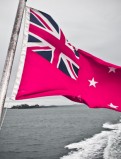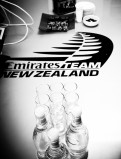Those Feral Media…
Focusing on his suggestion that media be better regulated and description of them as “feral beasts” – most of the media live up to his description of them, and intent to print what sells. Most fail to report his broader comments on the transformation of communications today.
He said fierce competition for stories meant that the modern media now hunted “in a pack”.
“In
these modes it is like a feral beast, just tearing people and
reputations to bits, but no one dares miss out,” he said. The result
was that the media was increasingly “and to a dangerous degree” driven
by “impact” which was, in turn, “unravelling standards, driving them
down”.
But then goes on to say…
“Newspapers fight for a share of a shrinking market. Many are now read on-line, not the next day. Internet advertising has overtaken newspaper ads. There are roughly 70 million blogs in existence, so I’m told, with around 120,000 being created every day. In particular, younger people will, less and less, get their news from traditional outlets.”
This one is really great:
“The reality is that as a result of the changing context in which 21st Century communications operates, the media are facing a hugely more intense form of competition than anything they have ever experienced before. They are not actually the masters of this change, they’re in many ways the victims.”
Safari on Windows… Oh dear….
Turns out that Safari on Windows has been engineered to provide a very typical Windows experience. It’s buggy, slow, and unusable on some of the systems I’ve installed it on.
Is this acceptable? Steve seems to think so – it’s beta after all. Sorry, that just doesn’t cut it for me. If Apple we’re to use the same excuse, I’d label is a lame cop-out. I’m wondering if one of the realities that Apple has run into here is the extreme diversity of the Windows world. Diversity breeds complexity.
There is a vast difference between beta and useable software that the mainstream user can test – say, Google docs. Until it gets to that stage, tech companies have a responsibility to not to unleash broken software riddled with security holes onto the unwitting public (or Enterprises for that matter). That’s not what Apple’s brand or product promise is. I love Apple and have a ton of Apple kit, but this is a really sorry attempt on the Windows platform.
And, frankly, where I could get it to barely work, I.E. 7 appears vastly superior on a number of fronts. In my testing it’s just as fast, Livewriter and del.icio.us plug-ins work great, and the interface is as slick. The bad news here is that there are so many cool competitive options I simply choose to uninstall Apple – and they’ll have to do something wonderful to get me back to using Apple Safari on Windows.
Steve, business is in perpetual beta mode – we just choose not to make all our customers suffer through it.
The Speechmaker
 Big speeches require a massive amount of effort.
Big speeches require a massive amount of effort.
Good communicators know this and smart executives commit to it.
The Wall Street Journal has a piece this morning on how Bill Gates developed his commencement address for Harvard.
What’s intriguing is how committed Bill is to the process – this is rare in an executive.
A couple of observations:
- Pick keynotes your execs can get passionate about. As much as you want to establish a sense of importance, it can only be important to them if it is important to them.
- Pick issues, topics, themes that those same execs can get really passionate about. Chances are it isn’t the industry you are in.
- Models are useful – speeches by others provide good context and illumination. In Bill’s case: “The speech, delivered at Harvard’s commencement on June 5, 1947, outlined the Marshall Plan, the bold economic relief program that lifted Europe from the ashes of World War II. To Mr. Gates, the general was describing the challenges facing postwar Europe in terms similar to how the software billionaire sees his own, 21st-century crusade: using philanthropy as a catalyst for reducing global inequities in health, wealth and education.”
- Tone is as important as content. Don’t confuse the Exec’s tone with the tone required for the audience and speech. Bill groked that: “In late May, Mr. Gates tapped Mr. Buffett again. He wanted to press graduates to become more aware and active in helping solve global inequities but was worried about sounding “overly preachy.” Mr. Gates went to Omaha, Neb., for the annual shareholders meeting of Berkshire Hathaway, Mr. Buffett’s company on which Mr. Gates serves as a board member. After the meeting, Mr. Buffett gave Mr. Gates some tips on delivery and tone.”
- The notion of the single speech writer might work in Political circles but you are going to have a greater chance of success by bringing in collaborators. In Bill’s case: “When he started working on the speech in December, he used as a sounding board a Gates Foundation staff member who had written for Slate, the online magazine started by Microsoft. The two traded outlines and drafts of the speech. By the end, Mr. Gates and his staff had met six times for brainstorming sessions, completed six drafts and traded many long emails. Mr. Gates wrote some of the longest ones himself.”
- And, no matter how good you are at collaborating and crafting the content, the exec has to be committed to molding the speech into something special. I’m not talking about the standard rehearsal the day or hour before. I’m talking about time spent on putting their thumb-print on it.
Mark on Personal Productivity
Well worth a read. A do most of these things and find they work great.
- Dump all tasks in to Outlook – three categories
- Must Do Now
- Do Later
- Watch & Tickle Later
- At the end of each day list on an index card the key priorities for the day ahead – do everything to get that list done
- Don’t answer the phone – everything goes to Voicemail
- Do email three times a day – early AM, mid-day and end of the day. Leave the inbox empty. File email in the same way as you file tasks
- Unlike Mark I keep a schedule – but I manage it myself.
- Commit. Don’t Commit. Move on. In other words, make decisions about what you are going to do and communicate the decision. Create standard “no commit” templates in Outlook – it’ll help. As Mark says, “Only agree to new commitments when both your head and your heart say yes”.
- Structured Procrastination is a good thing.
Biography
Andrew’s 20 years experience across business-to-business and consumer sectors spans leading award-winning programs and teams for Fortune and Times 100 companies, global brands, start-ups and the world’s hottest advertising and communications agencies. During his career he has worked and lived in the majority of the world’s major markets and developed a reputation as a highly creative executive, reputation turn-around specialist, and, marketer. He is a prolific writer, blogger and speaker on marketing, emerging business strategies, marketing/communications measurement, and Web 2.0.
Andrew played a key role in the development and launch of journeytotorino.com – Visa’s first foray into the blogosphere and blog for its Olympic athletes, and, Southwest Airlines two hot blog properties. Andrew has worked closely with a wide variety of startups through Group Lark and in his role as a director of Number 8 Ventures, New Zealand’s leading venture capital firm. Recent assignments have included restructuring and relaunching Esphion, launching Palamida and developing ‘guerilla-marketing’ strategies for Entrust.
Prior to starting Group Lark and joining LogLogic, Andrew was a senior member of Sun Microsystems’ global marketing leadership team. As vice president of worldwide marketing and communications his responsibilities spanned corporate marketing, global media and analyst relations, research, messaging and positioning, advertising and branding, product launches, tradeshows and events, publishing, and executive communications – including that for the offices of the CEO and COO; emarketing, Sun.com – including its industry-leading news site, and industrial design.
Andrew made the move to Sun following a successful career at Nortel Networks where he led all corporate marketing and communications and was chief marketer for Asia Pacific. Andrew joined Nortel from Fleishman-Hillard, the world’s largest public relations agency, where he was a senior vice president and partner consulting to global leaders such as Dell, Microsoft, IBM, and Sony. His achievements have earned him multiple awards and recognition including being named by PR Week as one of technology industry’s “Most Influential” communicators. In 2001, the corporate communications team he built and led at Nortel Networks won the Corporate Communications Team of the Year in PR Week’s inaugural US awards. He also won a Silver Anvil – the PR industry’s highest recognition for communications excellence – for Dell’s global consumer PR campaign, “PCs for People”. In leading communications programs for ID Software and Ensemble Studios, Andrew played a key role in launching some of the best selling PC gaming titles of all time. While at Fleishman-Hillard, Andrew pioneered breakthrough measurement techniques and systems including the new media performance metric, opportunities-to-see and the consultancies Balanced Communications Scorecard.
Andrew sits on the boards of Endace and Esphion; and, the advisory board of Right Hemisphere and Eurekster and recently served on the board of Argent Networks. In 2003 the New Zealand Government awarded him the inaugural World-Class New Zealander Award for his contributions to New Zealand. Today he chairs the New Zealand Government’s Technology beachhead in the US market. SiliconValley.com recently named him as one of the communicators to watch in Technology. Unlimited Magazine recently highligted Andy as one of New Zealand’s top influencers. Andrew’s blog was recognized by AdAge as one of the Top 100 marketing blogs in the United States.
A native of Auckland, New Zealand, Andrew holds a BA from Auckland University. When he is not immersed in work, he expends his spare energy as a competitive sailor, avid reader and wine enthusiast. He also enjoys cycling, windsurfing, writing, travel and design. Andrew is married with a delightful 28 month-old daughter, Sophia. He has no interest in golf
– ends –





